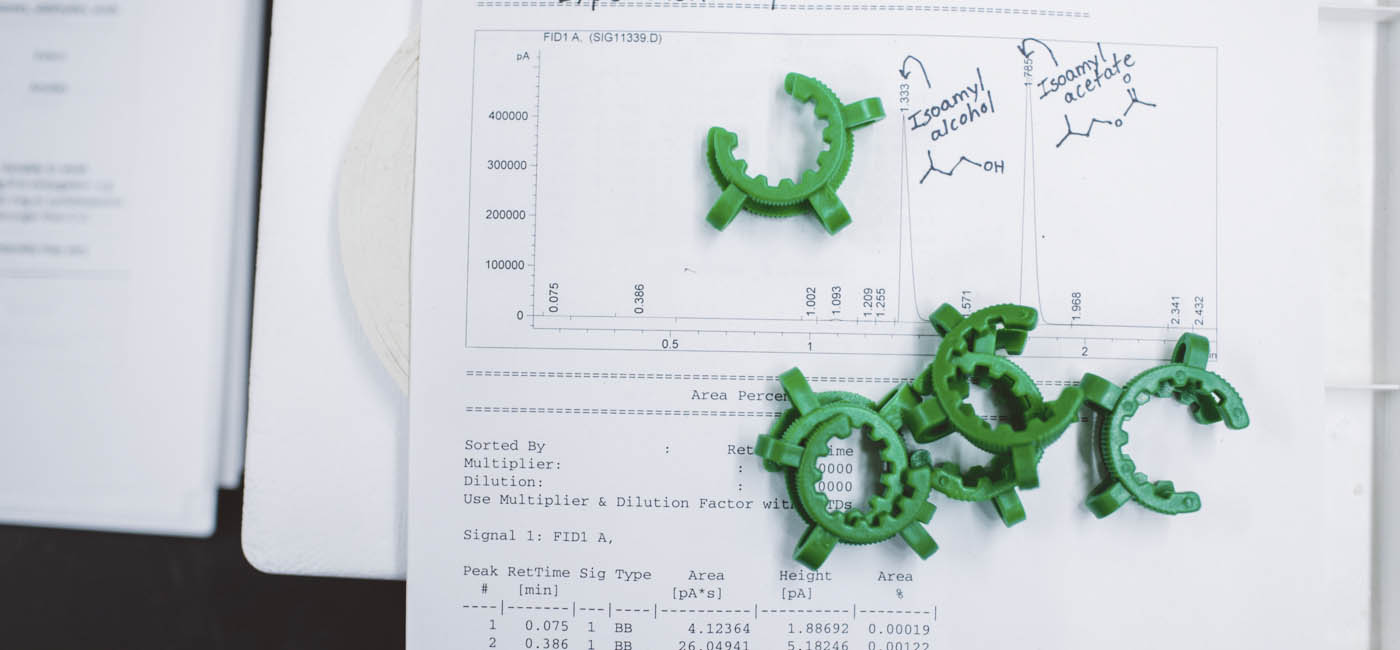Emmert says one question she has been asked frequently is how two such seemingly different projects fit into the same area of expertise. In fact, her research interests at first appear to be so varied that she has developed a presentation detailing how they are related.
The term Emmert uses to describe her overall research focus is “sustainable chemistry.” As she explains, her work ultimately seeks to solve problems related to shrinking amounts of raw materials that are used to produce fuels, medicines, and other everyday materials.
“There are three possible ways to approach the issue of sustainability through chemistry—by making raw materials from readily available sources like water, air, or biomass, by finding more efficient ways to use existing materials, and by recycling materials that are no longer directly useful,” says Emmert.
She admits that while most researchers choose to concentrate one of these areas, her work spans all three. However, one overarching similarity among all of Emmert’s projects is her focus on digging down to understand how and why chemical processes work the way they do.
Emmert’s NIH-sponsored project to develop a better way of designing drugs falls under her second focus area. Working with postdoctoral scholars and students in her lab, she has found a more efficient and accurate way of creating chemical bonds that help drugs bind to their intended targets in the body.
“We turned a process that normally requires several steps and takes two weeks into something that can be done overnight using a lot fewer resources,” says Emmert. “However, developing the process is just the first step. Now we need to get a better grasp of what exactly is happening at the molecular level so that we can later apply the process to different drugs.”
Emmert’s research on rare earth metals is part of her third focus area, recycling. Since 2012 she has been collaborating with mechanical engineering faculty through WPI’s Center for Resource Recovery and Recycling to develop a three-step process to recover rare earth metals, as well as other materials like iron and steel, from the highly magnetic motors of hybrid and electric cars.
“When you see the process in action as well as the end result, it sort of looks like magic, but it’s really about understanding the chemical properties of materials,” says Emmert. “We’re dealing with basic concepts—like reduction potential—that I teach students in my inorganic chemistry class.”
While Emmert often uses the word basic to describe her research, the impact she hopes to make is anything but.
“My overall goal as a chemist is to make a difference in society. I try to pick problems that are relevant, problems that are hard—problems that make life better,” says Emmert.
For example, one of Emmert’s newest projects seeks to develop a synthetic enzyme that can be used to more efficiently turn dense materials like wood into biomass fuels or materials. Another project is on its way to achieving a fundamental breakthrough in drug making through modifying a catalyst that chemists have struggled to apply for this purpose for over twenty years.
It’s probably safe to say that Emmert’s newsmaking days are far from over.
– BY JENNIFER WYGLINSKI

